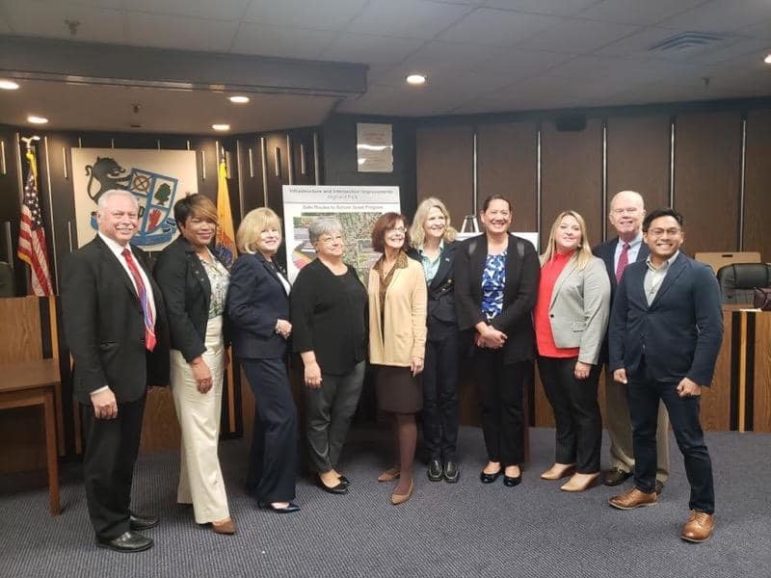Highland Park is on a fast track to get federal funding for improved walking and biking sidewalk access to Irving and Bartle schools. On Tuesday, October 23, the New Jersey Department of Transportation (NJDOT) Commissioner Diane Gutierrez-Scaccetti, along with Senator Patrick Diegnan, Assemblyman Robert Karabinchak and Assemblywoman Nancy Pinkin, announced the advancement of a Safe Routes To School (SRTS) project that will improve the safety and access of sidewalks near the Irving School and the Bartle School.
This is one of 28 projects that are moving forward because of an additional $100 million in federal funding that the Federal Highway Administration (FHWA) awarded to NJDOT in September.

“The Federal Highway Administration recognized the New Jersey Department of Transportation’s effectiveness in delivering projects that increase safety and make a positive difference in our communities,” NJDOT Commissioner Diane Gutierrez-Scaccetti said. “That’s why they authorized an additional $100 million this year, allowing NJDOT to advance this Safe Routes to School project to construction six months to a year earlier than scheduled.”
In 2017 Highland Park received a $216,000 Safe Routes to School grant to improve the safety and access of sidewalks at 16 intersections within Highland Park near the Irving School and the Bartle School. Safe Routes to School is a federally-funded program that was created to make pedestrian safety improvements near K-8 schools to encourage children, including those with disabilities, to walk and bike to school.
The new federal funds NJDOT received in September will allow this project to go to construction approximately six months to a year earlier than originally scheduled, which means Highland Park’s school children will have safer routes to school even sooner than planned.
This project is currently in design and Highland Park chose to utilize the NJDOT local Design Assistance consultant to advance the design, which is a service provided at NJDOT’s cost above and beyond the amount of the grant. The Design Assistance helps reduce costs, improve quality and speed the delivery of these types of Local Aid projects.
The Highland Park municipal staff and mayor and council have worked hard to ensure the successful implementation of the project through effective and efficient coordination with the state, noted the state officials.
“More students walking and biking means less traffic on the road and near schools, improving safety and promoting healthier kids,” added Senator Patrick Diegnan. “We are very appreciative of NJDOT for working side by side with us in this process to improve the quality of life for residents of Highland Park and other communities throughout the state.”
“I am grateful that the Department of Transportation and Federal Highway Administration have afforded Highland Park this opportunity to make the community safer, more accessible, and healthier for everyone,” Assemblywoman Pinkin said. “New Jersey is an aging state with an infrastructure that enables the region’s economic growth. This funding will help keep New Jerseyans moving.”
“Every resident and student should feel safe on their streets. Highland Park is one of the most walkable communities in our District and I’m glad to see this project expedited with the support of NJDOT and FHWA,” Assemblyman Karabinchak said. The Safe Routes to School program has transformed our communities in the past and will we continue to advocate for more funding to improve our curbs and crosswalks in the future.”
Each year, FHWA redistributes the limit of what each state may spend before the Federal fiscal year ends on September 30. For FY19, FHWA approved NJDOT’s entire request of $100 million – which is more than double the largest amount received over the past 10 years.
Some of the funds will be used for the Highland Park Safe Routes to School project, as well as a variety of other projects including bridge preventative maintenance, pedestrian safety improvements, bikeway improvements, intersection improvements and capital projects that will ease congestion and improve safety.
This is one of the 28 projects that are being funded, including 10 that are part of the Transportation Alternatives Set-Aside Program (TAP), which provides federal funds for community based “non-traditional” projects designed to strengthen the cultural, aesthetic and environmental aspects of the nation’s intermodal system. For a list of projects click here.